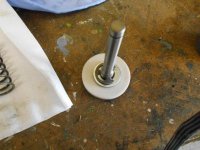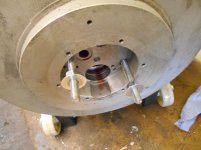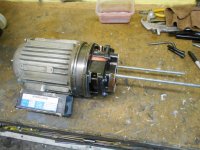Thanks gents, I guess I'll just go on with it and see how it goes. That's the beauty of the home workshop, we can experiment - and get it wrong if we must!
Col, what I do is save the ebay search (it's the green 'follow this search' button) with the particular item I want and set it for 'receiving emails'. This way I never have to check for it, an email will drop in as soon as somebody lists an item with that description.
For what it's worth, I had a look at my own manual and this 'unloader valve' is listed here as a 'pressure control valve'. Pretty simple device. What doesn't make sense is, when these things fail they are either stuck closed or leaking - which means pressure will either build up continuously into the red zone, or not being able to maintain pressure. Any chance there is an obstruction after the valve?
Col, what I do is save the ebay search (it's the green 'follow this search' button) with the particular item I want and set it for 'receiving emails'. This way I never have to check for it, an email will drop in as soon as somebody lists an item with that description.
For what it's worth, I had a look at my own manual and this 'unloader valve' is listed here as a 'pressure control valve'. Pretty simple device. What doesn't make sense is, when these things fail they are either stuck closed or leaking - which means pressure will either build up continuously into the red zone, or not being able to maintain pressure. Any chance there is an obstruction after the valve?













